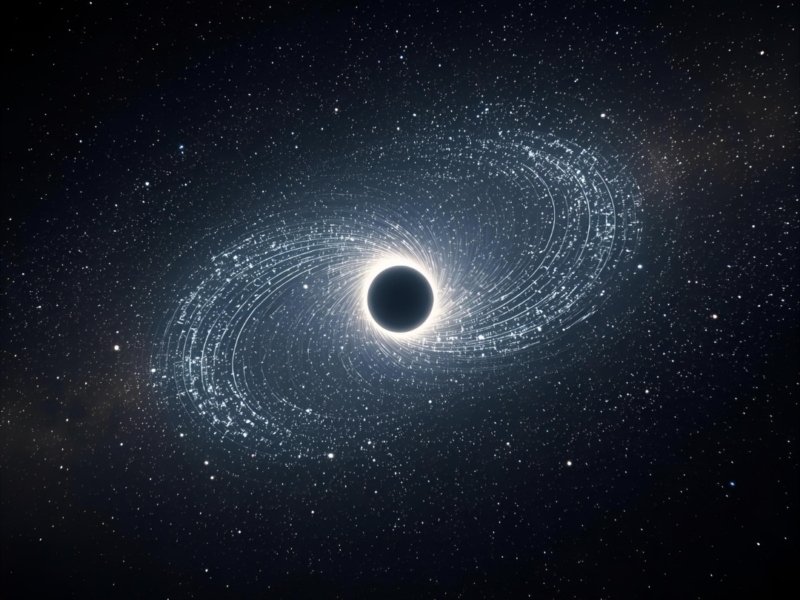Axion-like Dark Matter in Gravitational Lensing

Abstract:
Much of the universe is made of matter that neither absorbs nor emits light: Dark Matter (DM). The existence of DM is the clearest sign that the Standard Model of particle physics – which in its current form contains no particle for DM – is incomplete. Theories that address other perceived deficiencies in the Standard Model invoke hypothetical particles that are considered as candidates for DM, for which the leading contenders are WIMPs versus Axions. Identifying the particle that constitutes DM is widely regarded as the most important of all problems in fundamental physics, for which the successful identification will point the correct path to New Physics beyond the Standard Model.
Aside from laboratory experiments, which have so far failed to detect WIMPs and do not yet have sufficient sensitivity to detect Axions, gravitational lensing provides the most powerful probe of the DM particle. Gravitational lensing, a prediction of General Relativity, results as a consequence that mass curves spacetime: a foreground massive object (such as a galaxy) can focus light to generate multiple images of the same background object (most commonly, a distant galaxy or its constituents). Cosmological models that adopt WIMPs predict that the DM halos of galaxies should decrease smoothly outwards in density. Such models for lensing galaxies (henceforth, smooth lens models), however, leave discrepancies between the predicted and observed brightnesses and sometimes also positions of multiply-lensed images of (background) quasars (bright nuclei of galaxies) or supernovae (stellar explosions). By contrast, cosmological models that adopt Axions predict that the DM halos of galaxies should be strongly modulated in density on spatial scales of order 100 pc, forming pockets of both under-densities and over-densities ranging in density from perfect vacuum to twice the local average density. We (Amruth et al. 2023, Nature Astronomy) have shown that such density modulations can perturb both the positions and brightnesses of multiply-lensed images of background quasars generated by foreground (lensing) galaxies: the levels of to which the multiply-lensed images are perturbed are comparable to the discrepancies left by smooth lens models between the predicted and observed positions as well as brightnesses of multiply-lensed quasars, thus presenting a resolution to lensing anomalies.
Smooth lens models for foreground lensing galaxies are constructed based on the observed positions, and sometimes also brightnesses, of the multiply-lensed images of background objects generated by that foreground galaxy. If both the image positions and brightnesses are perturbed by density perturbations in DM halos (comprising Axions), however, the smooth lens models thus constructed cannot accurately capture the actual global mass profile of the lensing galaxy. The net effect is, most likely, an underestimate of the true level of lensing anomalies generated by density perturbations in the DM halo of the lensing galaxy. To address this issue, we propose to:
(i) select model galaxies from the Illustris-TNG project (based on WIMPs) to make mock multiply-lensed images of background quasars of supernovae (henceforth referred to as mock-WIMP multiply-lensed images);
(ii) embed density modulations (in accordance with Axions) in the DM halos of the same model galaxies to make mock multiply-lensed images of background quasars or supernovae (henceforth referred to as mock-Axion multiply-lensed images).
(iii) Evaluate differences in both image positions and brightness between (i) and (ii), which therefore correspond to the true level of lensing anomalies generated by Axion versus WIMP models for the DM halos of galaxies
(iv) Construct smooth lens models based on the mock-Axion multiply-lensed images. Compare the predicted versus mock image positions and brightnesses to assess the level of lensing anomalies left by such models;
(v) Compare the level of lensing anomalies in (iii) versus (iv), providing a measure of the level to which lensing anomalies are under-estimated by (iv);
(vi) Compare the smooth lens models in (iv) versus the actual global mass profile of the model lensing galaxies to assess the degree to which such smooth lens models actual capture the true global mass profile of lensing galaxies.”
Skills and experience required for the project:
Physics, engaged in if not research experience in astrophysics, knowledge of gravitational lensing and dark matter
Apply Now